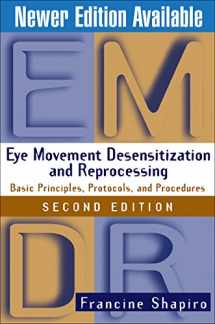
Eye Movement Desensitization and Reprocessing (EMDR): Basic Principles, Protocols, and Procedures, 2nd Edition
Book details
Summary
Description
This volume provides the definitive guide to Eye Movement Desensitization and Reprocessing (EMDR), the psychotherapeutic approach developed by Francine Shapiro. EMDR is one of the most widely investigated treatments for posttraumatic stress disorder, and many other applications are also being explored. Presenting background on EMDR’s development, theoretical constructs, and possible underlying mechanisms, the volume also contains detailed descriptions and transcripts that guide the clinician through every stage of therapeutic treatment, from client selection to the administration of EMDR and its integration within a comprehensive treatment plan. Among the many clinical populations for whom the material in this volume has been seen as applicable are survivors of sexual abuse, crime, and combat, as well as sufferers of phobias and other experientially based disorders. Special feature: Two online-only appendices were added in 2009 (www.guilford.com/EMDR-appendices). These appendices comprehensively review current research on EMDR and its clinical applications.
EMDR is now recognized by the American Psychiatric Association as an effective treatment for ameliorating symptoms of both acute and chronic PTSD (APA Practice Guidelines for the Treatment of Patients with Acute Stress Disorder and Posttraumatic Stress Disorder).
New to This Edition:
*Updated neurobiological data, findings from controlled clinical studies, and literature on emerging clinical applications.
*Updated protocols and procedures for working with adults and children with a range of presenting problems.


We would LOVE it if you could help us and other readers by reviewing the book
Book review


